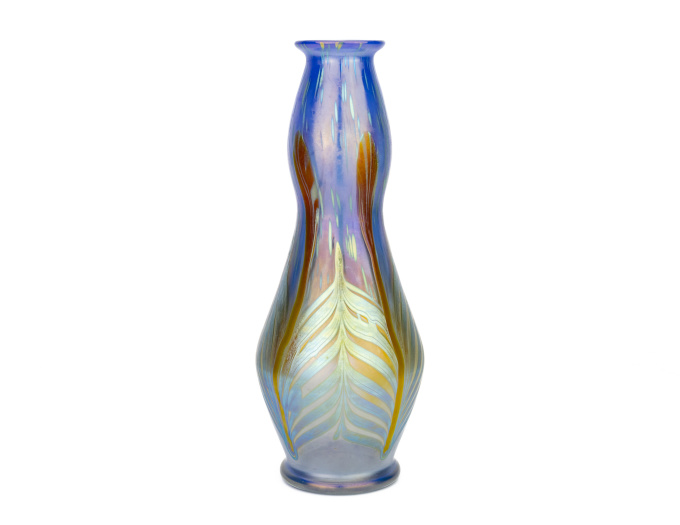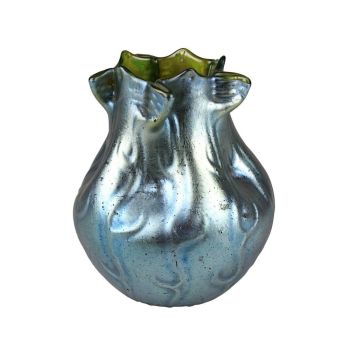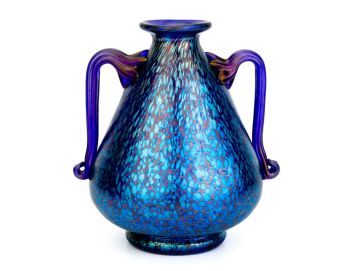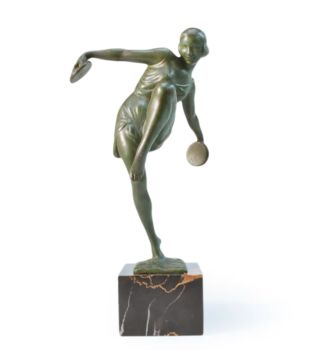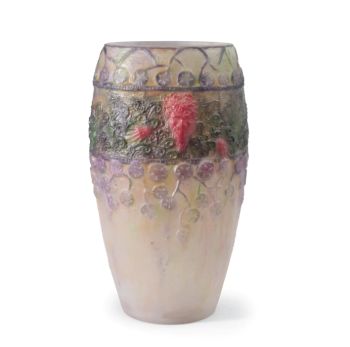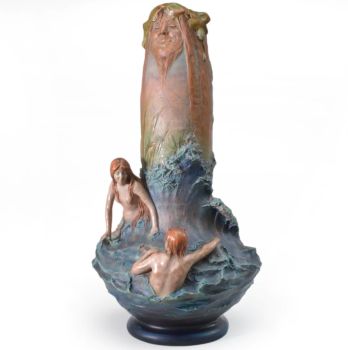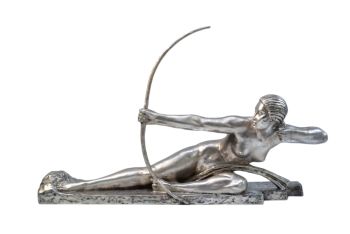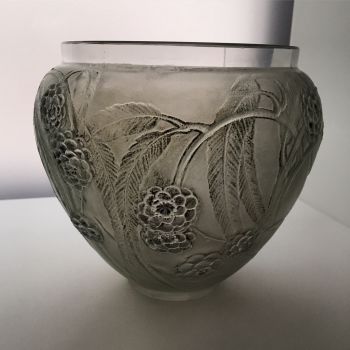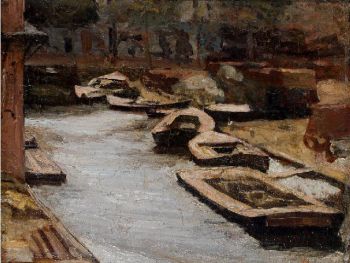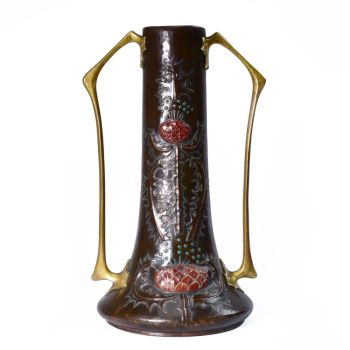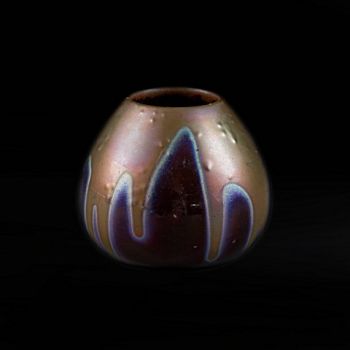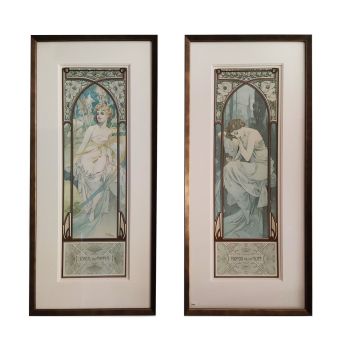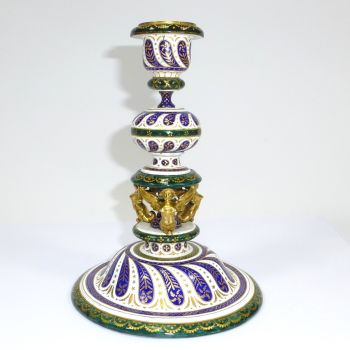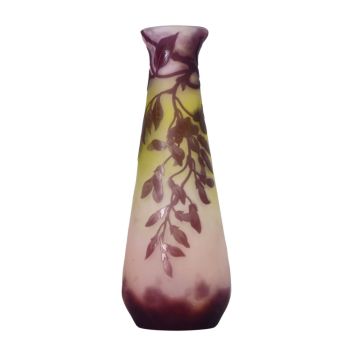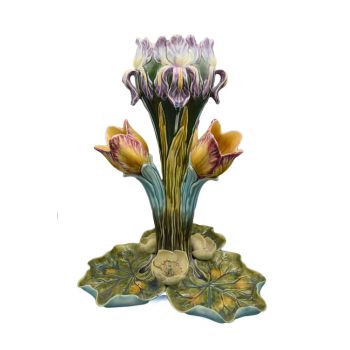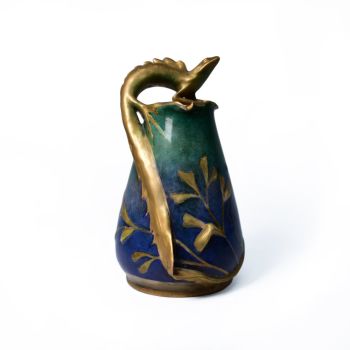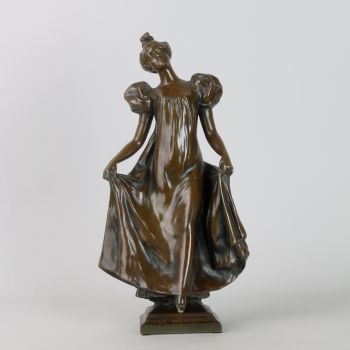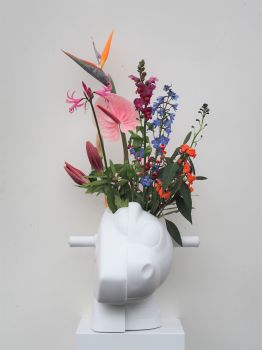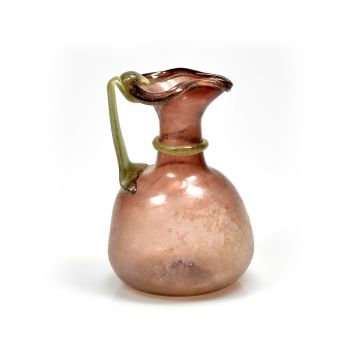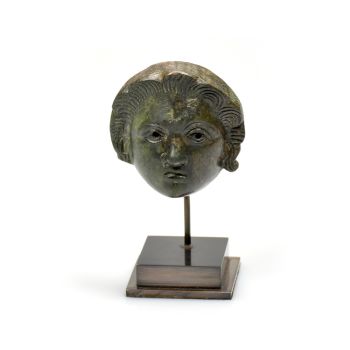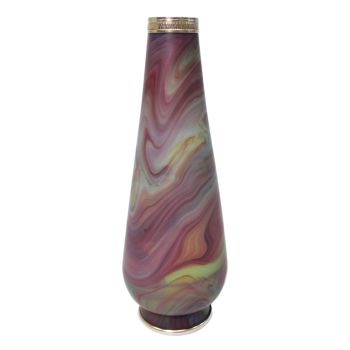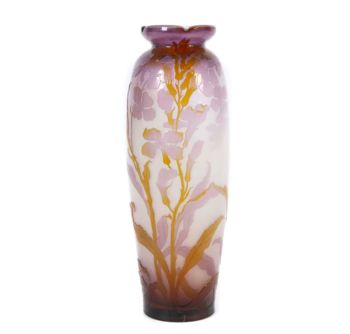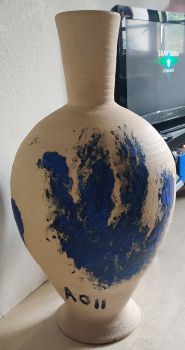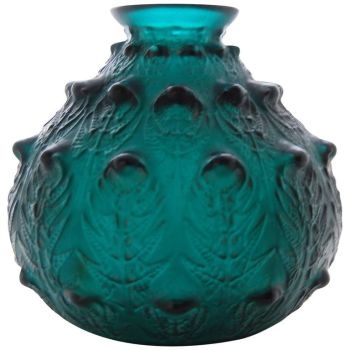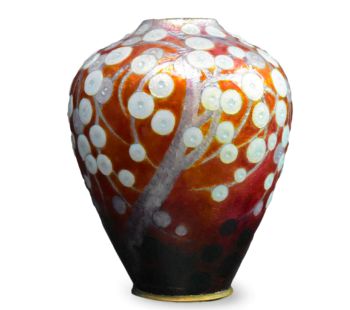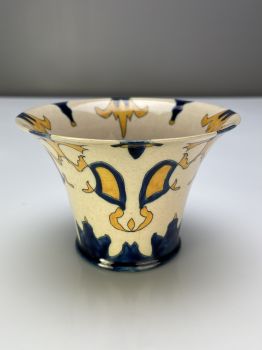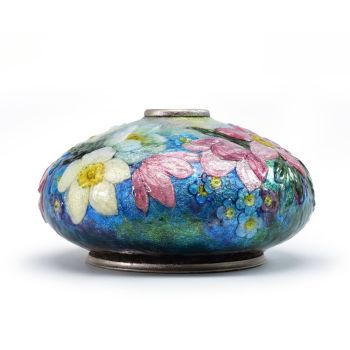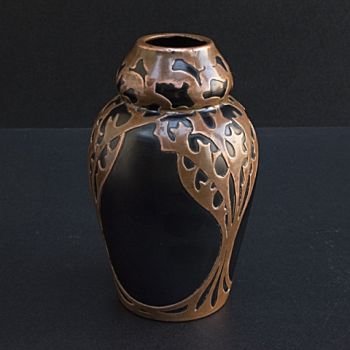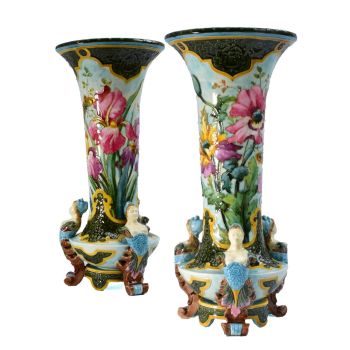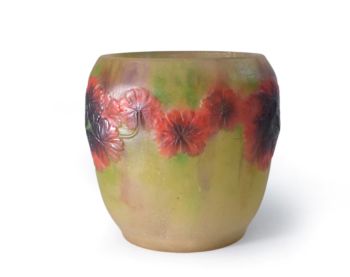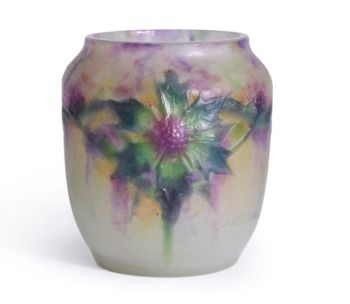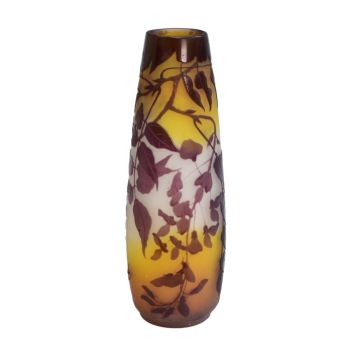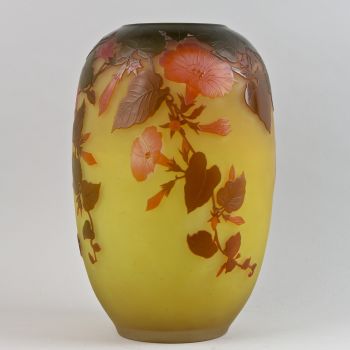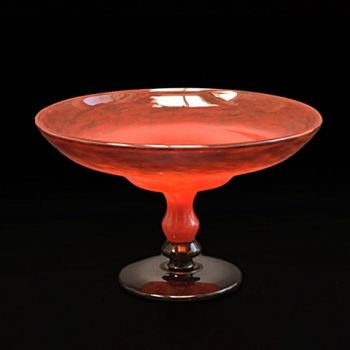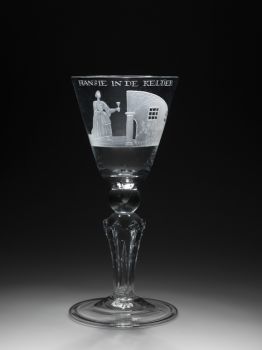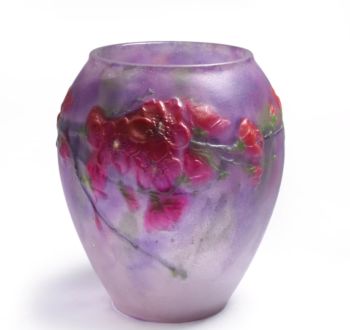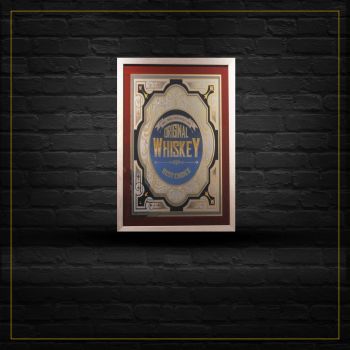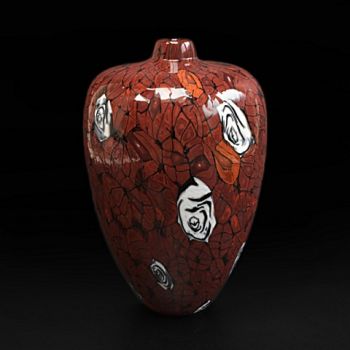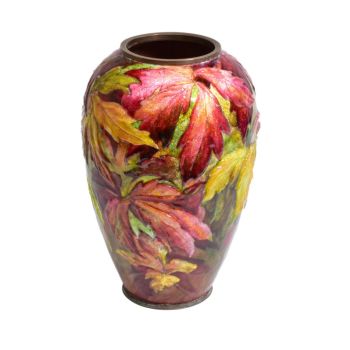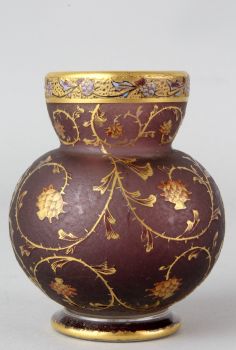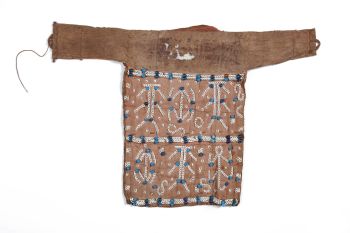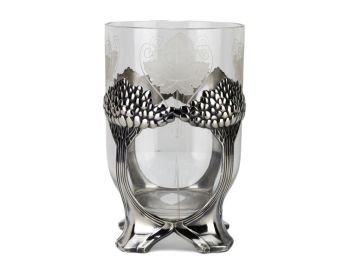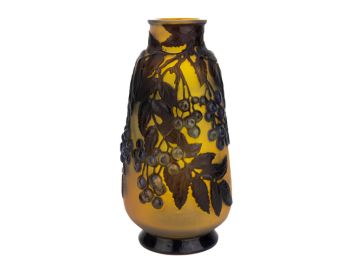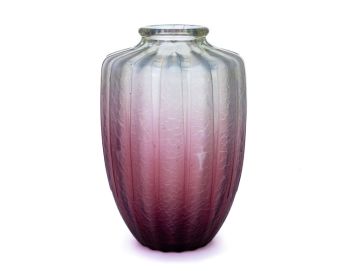Johann Loetz Witwe – Phänomen Genre vaas in blauw opaal – 1902 1902 - 1903
Johann Loetz (Lötz) Witwe Klostermühle
Glass
24 cm, ø 9 cm
ConditionMint
Price on request
Antiques Emporium
- About the artworkDeze spectaculaire Johann Loetz Witwe Jugendstil vaas behoort tot de iconische Phänomen Genre reeks, een serie waarin de befaamde glasproducent Johann Loetz Witwe zijn meest vernieuwende en artistieke technieken heeft toegepast. Deze specifieke vaas, die te dateren is rond 1902-1903, weerspiegelt de artistieke en technische innovaties die kenmerkend zijn voor de Weense Secession en Jugendstil beweging, waarin de combinatie van kleur, vorm, en techniek samensmelt tot een meesterwerk van glasblaaskunst.
De vaas is vervaardigd uit een opaalblauwe glasmassa die naar de bovenkant toe steeds transparanter wordt, wat een subtiele en vloeiende overgang in kleur creëert. Deze kleurgradatie benadrukt het vakmanschap en artistieke inzicht dat Loetz bezat, en is typerend voor de experimentele stijl van de Phänomen Genre serie. De buik van de vaas is rijkelijk versierd met iriserende verticale banen in een fraai veermotief, dat licht vangt en weerkaatst in een schitterend spectrum van kleuren. Dit iriserende effect, dat sterk doet denken aan de natuurvormen en bewegingen waar Jugendstil om bekend staat, benadrukt het dynamische karakter van de vaas.
Wat deze vaas uniek maakt, is de toevoeging van vier verticale, roodbruine 'tadpoles' die langs de vaas zijn aangebracht. Deze vormen worden omlijst door zilverkleurige, iriserende strepen die het geheel een extra diepte en contrast geven. De gedetailleerde plaatsing en afwerking van deze decoratieve elementen getuigen van de uiterst precieze technieken en artistieke visie die Loetz en zijn ontwerpers toepasten in deze periode.
Het specifieke Phänomen Genre type van deze uitvoering is helaas niet bekend, omdat een groot deel van het Loetz archief uit de periode 1901-1903 verloren is gegaan. Desondanks kan, op basis van vorm, kleurgebruik, en de zeldzame signatuur op deze vaas, met zekerheid worden vastgesteld dat dit stuk een origineel Loetz-ontwerp is uit de periode 1902-1903. Vergelijkbare uitvoeringen uit dezelfde periode bevestigen dat dit stuk niet alleen esthetisch indrukwekkend is, maar ook een representatief voorbeeld vormt van de innovatieve stijl en technische virtuositeit die Loetz in het begin van de 20e eeuw ontwikkelde.
Literatuur:
Sammlung Karl H. Bröhan – Berlin – Kunst der Jahrhundetwende und der zwanziger Jahre. Blz. 195 - About the artist
Lötz/Loetz was founded by Johann Lötz in 1840 and was a company based in Bohemia, in the Czech Republic, at the time Lötz belonged to the Empire of Austria-Hungary. In 1879, a grandson of Lötz, Max Ritter-Von Spaun, took over the business from his grandmother and kept the name Joh. Lötz Witwe.
From that moment on, Johann Lötz Witwe really started to make a name for itself, they developed new innovative glass techniques, but their design and bright colors were also completely innovative. They designed special shapes and vases, luxury items, which they sold in luxury shops in Vienna, Berlin, Hamburg, Paris, London, Milan, Brussels and Madrid. It soon made them very well known and famous.
It was the period that Art Nouveau or as it was called in Germany Jugendstil flourished. They used organic shapes, nature was their example, also for Lötz, they developed beautiful decors, resembling butterfly wings, such as the papillon decor of this vase, often the shapes were formed organically by using tongs to shape the hot glass unevenly , as also flowers are formed. But also an octopus or sea shells were taken as examples for their special vases and decors.
Lötz participated in all kinds of World Exhibitions, including the famous World Exhibition of 1900 in Paris where they won the Grand Prize. They were awarded numerous prizes for participation in World Exhibitions. Max Ritter von Spaun also received special awards for his contribution to the glass industry, in 1883 he was allowed to use the Imperial eagle in their shield and seal, they were also allowed to use K.K. Put Private Glass Factory in front of their name. In 1889 he also received a knighthood from Franz Josef. But other royal houses were also involved. He received the Belgian Order of Leopold and the honorable French Legion d'Honneur.
Their designs were popular, also in the United States. Tiffany worked with Lötz on the Favril set. Lötz patented some of their special techniques, such as the one they used to make the Phänomen decor. They were able to make iridescent glass. In short, Lötz had become a household name. And it still is.
Lötz also worked closely with other glass manufacturers such as J.&L. Lobmeyer and E. Bakolowits Söhne in Vienna and with Argentor. In addition, Lötz worked closely with various artists, such as Josef Hoffmann, Koloman Moser, Franz Hofstötter, Michael Powolny and other artists from the Wiener Werkstätte. Michael Powolny was responsible for the much tighter tango vases of the 1920s.
The First World War and the end of the Austrian Empire meant a difficult period for Lötz.
Lötz existed until 1940, after a bombing raid the factory was completely burnt down. After WWII, the Czech Republic belonged to the satellite states of the Soviet Union, the factory was nationalized until it was finally closed in 1947.Lötz glass is still very popular and is collected worldwide, in addition, their oeuvre can also be found in many museum collections.
Are you interested in buying this artwork?
Artwork details
Related artworks
Johann Loetz (Lötz) Witwe Klostermühle
Johann Loetz Witwe - Phänomen Genre 7773 – Orange1900 - 1910
Price on requestAntiques Emporium
Johann Loetz (Lötz) Witwe Klostermühle
Johann Loetz Witwe – Jugendstil Cobalt Papillon vaas1900 - 1910
Price on requestAntiques Emporium
1 - 4 / 7- 1 - 4 / 24
Johann Loetz (Lötz) Witwe Klostermühle
Johann Loetz Witwe - Phänomen Genre 7773 – Orange1900 - 1910
Price on requestAntiques Emporium
René Lalique
A very rare deep green ‘Fougeres’ Vase designed by R. Lalique1912
€ 8.950Lennart Booij Fine Art and Rare Items
 Curated by
Curated bySilla Scheepens
1 - 4 / 24Johann Loetz (Lötz) Witwe Klostermühle
Johann Loetz Witwe – Jugendstil Cobalt Papillon vaas1900 - 1910
Price on requestAntiques Emporium
Gabriel Argy-Rousseau
Gabriël Argy-Rousseau – Crabes et Algues vase – 19201920 - 1929
Price on requestAntiques Emporium
Unknown artist
Japanese art deco lacquervase with Scarab beetle motif1920 - 1950
Price on requestDille Art
1 - 4 / 24Unknown artist
François-Théodore Legras – Tall “Fleurs de Pommier” apple blossoms vase1900 - 1909
Price on requestAntiques Emporium
1 - 4 / 24Frères Daum
Daum Nancy – “Paysage Soleil Couchant” vase with two applied handles1900 - 1910
Price on requestAntiques Emporium
Johann Loetz (Lötz) Witwe Klostermühle
Johann Loetz Witwe – Jugendstil Cobalt Papillon vaas1900 - 1910
Price on requestAntiques Emporium
Unknown artist
François-Théodore Legras – Tall “Fleurs de Pommier” apple blossoms vase1900 - 1909
Price on requestAntiques Emporium
Johann Loetz (Lötz) Witwe Klostermühle
Johann Loetz Witwe - Phänomen Genre 7773 – Orange1900 - 1910
Price on requestAntiques Emporium
1 - 4 / 12


